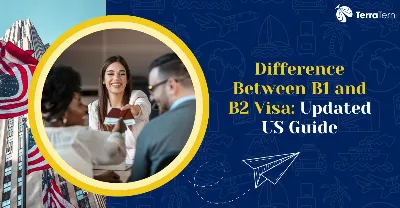Key Highlights
- Latest Facts & News (2025)
- What is the Difference Between B1 and B2 Visa in 2025?
- Latest Application Process for B1 and B2 US Visas in 2025 for Indians
- Latest Key Differences Between B1 and B2 Visa (Comparison Table) 2025
- Current B1/B2 Visa Cost, Validity, and Extension for Indians in 2025
- Common Reasons for B1/B2 Visa Denial in 2025 for Indians
- Conclusion: Choosing the Right Visa for Your US Visit
The difference between B1 and B2 visa is essential to anyone who intends to visit the US in 2025, whether on business or leisure. As the number of B1/B2 visa applications increases by 15 percent in the fiscal year 20242025, knowing what type of visa you require is a step towards not wasting money and time. By March 2023, being a B1/B2 visa holder in the US, an individual can attend job interviews in the country, yet cannot work, and the fee required to obtain such visas is $185.
The processing times differ in every country, and these visas are usually granted for up to a decade, with the maximum duration allowed in the country being 6 months per visit. B1/B2 visa has become standard, and a tourist and business person can now combine the two visas into a single visit; thus, it is necessary to know the distinction between B1 and B2 visas before planning your trip to the US to avoid anything going wrong.
Latest Facts & News (2025)
-
B1/B2 visa applications have surged by 15% in 2024–2025, reflecting increased global travel.
-
As of March 2023, B1/B2 visa holders can attend job interviews in the US but cannot work.
-
The B1/B2 visa fee is $185, with processing times varying by country.
-
B1/B2 visas are commonly issued for up to 10 years, with each stay limited to 6 months.
-
Combination B1/B2 visas are now standard, allowing both business and tourism in one trip.
-
Applicants must prove strong ties to their home country and intent to return.
-
Medical tourism via B2 visas is on the rise, especially for elective procedures.
-
Visa extensions are possible for up to 6 months under certain conditions.
-
Recent US policy changes emphasize stricter checks on intent and documentation.
-
Digital interviews for B1/B2 visa applicants are now available in many countries.
Are you planning a trip to the US for business or pleasure? Discover the crucial differences between B1 and B2 visas and avoid costly mistakes with our expert guide.
What is the Difference Between B1 and B2 Visa in 2025?
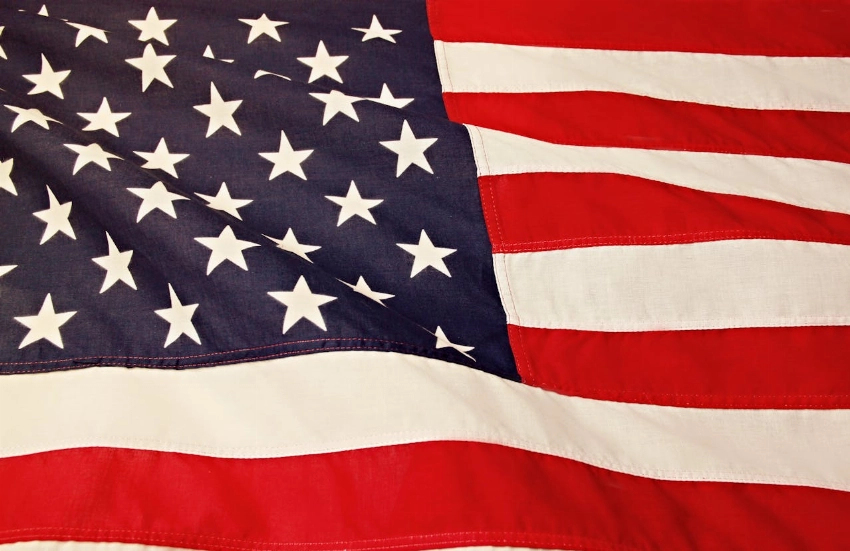
The difference between B1 and B2 visa is primarily purpose-related, allowable activities, and eligibility; the information that can either freshen or burn your US travel plans. A B1 visa is intended for business transactions, namely meetings, conferences, and attending professional events. On the contrary, a B2 visa is designed to travel on a tourism basis, visit their family, get medical treatment, and engage in social and recreational activities.
Being aware of the difference between B1 and B2 visa assists you:
-
Do not face the denial of a visa; ensure that you apply under the appropriate category according to the purpose of your travel.
-
Make your US visit with affirmation, and know the activities you can perform legally on US soil.
-
It is possible to remain in line with the rules of the US immigration, minimizing the chances of inconveniences during subsequent trips.
A little time spent learning the details of the difference between B1 and B2 visa ensures that you do not do something wrong and perform the action on your visit to be sure that everything is going the right way. You can realize your intentions on the visit to be sure you can stick to that without any problems.
B1 Visa – Purpose, Activities, and Eligibility
What is the difference between B1 and B2 US visa? The B1 visa is one of the business visas in the United States granted to travelers wishing to visit the United States and participate in some business-related activities.
The goals of the B1 visa are:
-
Going to business meetings with a partner or a client.
-
Participating in trade fairs and conferences.
-
Carrying out negotiations and talks.
-
Taking professional tests.
-
Participating in conventions concerning your business or Work.
-
Asking for advice from business associates in the US.
B1 visa applicants may have to meet the following requirements:
-
You should present the business purpose of your visit.
-
You must prove you have enough finances to cover your stay in the US.
-
You have to submit evidence of close affiliation to your country of origin, which may be through employment records, family papers, or real estate papers.
-
You should plan clearly after your visit to get to your home country.
What can not be done under a B1 visa:
-
Work in a paid position (with an American company or person).
-
Enrol in academic or credit long-term study programs.
-
Provide lean Work to an employer in the US, even when unpaid.
Knowing the difference between B1 and B2 visa, combined with the well-defined boundaries of the B1 visa, will help you not unintentionally violate them and succeed in your business travel without any challenges or issues related to the B1 visa.
Also Read: Germany Work Visa Requirements: Latest Guide
B2 Visa – Purpose, Activities, and Eligibility
The difference between B1 and B2 US visa is that a B2 visa is a US tourist visa meant to be applied for by visitors who travel to the US without plans to do business.
The function of the B2 visa consists of:
-
Leisure and Sightseeing in cities and landmarks in the US.
-
Traveling to visit family members and friends in the US.
-
An elective procedure and medical care.
-
Engaging in social/ recreational activities, e.g., community events or hobby-focused activities.
-
Putting oneself through unpaid events or short-duration non-credit classes, such as cooking courses or foreign language workshops, to enhance oneself.
Who can apply for a B2 visa:
-
You must provide documents demonstrating that you visit because of tourism, family visits, or medical purposes.
-
You should also prove that you are financially capable of taking care of your transportation and accommodation in the US.
-
You will be expected to be able to present documents of connection with your home country, i.e., a job certificate, proof of property documents, or household obligations.
-
You must convince the consular officer that you will return to your home country after your visit.
Items you cannot do with a B2 visa:
-
Get a job or any paid working time in the US.
-
Take classes that may be applied to a degree or certificate.
-
Do professional Work in the US, even when unpaid.
The difference between B1 and B2 visa will guide you in identifying your travel plans with the proper type of visas and offer you a simple, legal, and tension-free trip to the US.
Also Read: Australia Visa Application: Experts' Complete Visa Guide
B1/B2 Combination Visa: When Both Apply?
What is the difference between B1 and B2 US visa? By combining a B1 and a B2 visa, this B1/B2 combination visa enables one to use them simultaneously and within a single visit to go to the United States on both business and tourist purposes in one trip; something that is very convenient to a multi-faceted traveller.
B1/B2 should be looked at in case of:
-
You have to go to business meetings, and you intend to visit relatives or friends in the US.
-
If you are interested in visiting a conference or trade fair and then visiting destinations,
-
You intend to do medical tourism, and you have to run business interests as well.
Advantages of B1/B2 combination visa:
-
It is time-saving since it eliminates the necessity to obtain two independent visas.
-
Gives options to combine business with leisure during a single trip.
-
It enables smooth travel planning and can be used by professionals who regularly include short-course travel with business and family visits or short vacations.
Knowledge of the time to choose the B1/B2 visa and the difference between B1 and B2 visa types will assist you in planning your travel to the US very productively. It will help you ensure compliance with the US entry requirements.
Latest Application Process for B1 and B2 US Visas in 2025 for Indians
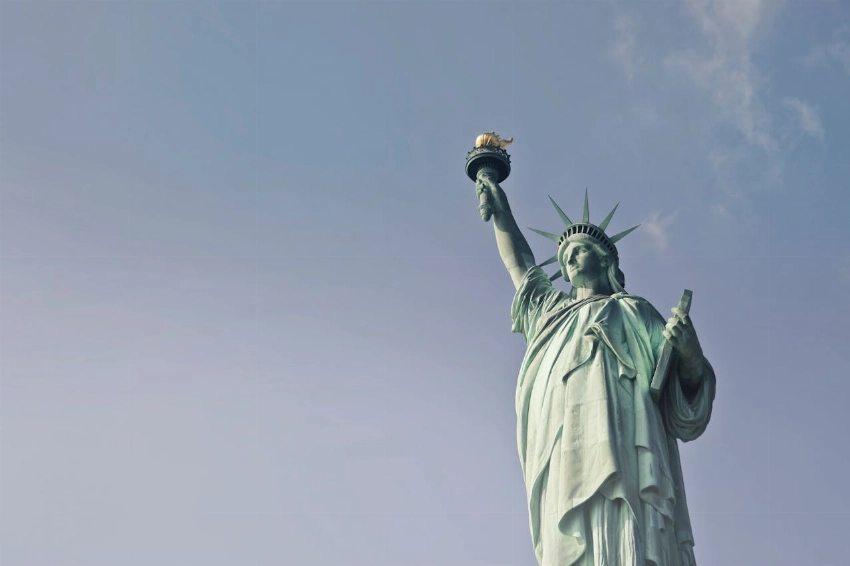
When you apply under the B1/B2 visa, there are some well-defined steps to follow, which go a long way towards applying with the desired confidence to visit the US:
-
Fill out the DS-160 Application Online
This is your non-immigrant visa application form. You are to complete this form correctly.
-
Make a Payment for the Visa Application
By 2025, the fee will be $185, and payment guidelines will vary according to your region.
-
Make a Visa Appointment.
Book your appointment separately at your country's closest US embassy or consulate.
-
Bring Your Documents
Bring your passport, DS-160 receipt, financial documents, and papers of your connection to your home country.
-
Come to Your Visa Interview
Be punctual and do not evade any of the questions. Prepare to tell your travel program, reason, and desire to return home.
-
Wait till Processing the Visa
Assuming that it is passed, you will be given back your passport with the B1/B2 visa stamped on it, and you can travel on a business or tourism basis.
It will continually improve your approval and, at the same time, help you to comprehend the difference between B1 and B2 visa categories in the course of preparing yourself.
Current Required Documents for B1 and B2 Visas for Indians
To ensure there are no delays when processing your B1/B2 visa and increase the likelihood of being approved, prepare the following documents:
-
A legitimate passport valid for at least six months past your proposed stay in the US.
-
DS-160 confirmation page with the barcode (printed and ready to take your interview).
-
The receipt of the visa fee payment indicates the amount of $185 you paid.
-
People should have passport-size photos that conform to the requirements of a US visa.
-
Documentation of funds to indicate that you can fund your stay (bank statements, salary slips, or even a sponsorship letter from a person covering your visit).
Papers indicating a connection to your local country, including:
-
A letter of employment from your current employer.
-
Documents of property ownership.
-
Family responsibilities are circumstantial evidence.
Invitation letters in case you are:
-
Business meeting (B1).
-
Going to see relatives or friends (B2).
-
Medical documents in case you are traveling on a B-2 visa with medical treatment
Being ready with these documents will assist in making a complete application and showing your definite purpose of travel, as you may have grasped the difference between B1 and B2 visa needs and qualifications.
Also Read: Top 10 Visa Rejected Reasons: Know Latest Changes
Interview Preparation and Common Mistakes in 2025
You get a B1/B2 visa interview to decide whether to enter the US for business or tourism.
Pre-interview advice:
-
Make it clear what this visit is about: a business (B1) or tourist (B2).
-
Be confident and honest when answering all questions to earn the established trust.
-
It also makes the process easier by presenting organized documents that can be reviewed easily.
-
One should not give a vague or conflicting response since this can sound alarm bells.
-
Wear something presentable and be in control of yourself during the interview.
Errors that usually result in denials:
-
Indefinite travel purpose, which leaves officers with no idea about your intentions.
-
Lack of sufficient evidence to support your stay in the US.
-
Poor connections with their native country make people doubt that they may overstay.
-
Making misleading or contradictory statements may lead to current and future service denial.
-
A record of overstay during other visits to the US or other countries.
With these tips and errors in mind, you can focus your preparation on the line of difference between B1 and B2 visa. You can be sure that your interview will be focused, clean, and professional, with your clear goal to take a trip to the prescribed destination with a legitimate purpose.
Latest Key Differences Between B1 and B2 Visa (Comparison Table) 2025
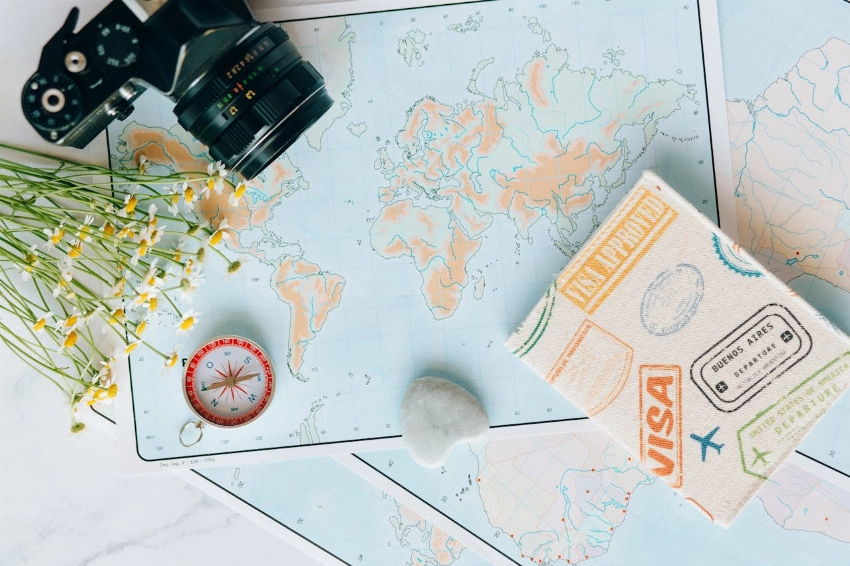
The following difference between B1 and B2 visa can aid you in making up your mind about their differences as you intend to travel to the US:
-
A B1 visa is intended to be used in case of business activities, including meetings, conferences, and negotiations.
-
The B-2 visa is directed to conducting a tour, visiting family and friends, getting medical treatment, or attending social activities.
-
Both visas typically last no more than 10 years, with a limited visit time of 6 months.
-
Neither visas permit work or extended study in the US.
-
To qualify, you must show evidence of intention, financial capacity to finance your stay, and a strong connection to your native country.
The difference between B1 and B2 visa is that you are primarily using it to visit:
-
If you go there first, you should apply for a B1 visa, not because of business.
-
Get a B2 visa if you have a tourist or family visiting intention.
|
Feature |
B1 Visa (Business) |
B2 Visa (Tourism) |
|
Purpose |
Business meetings, conferences |
Tourism, visiting family, medical |
|
Activities |
Negotiations, consulting, research |
Sightseeing, social events, leisure |
|
Duration |
Up to 6 months per visit |
Up to 6 months per visit |
|
Validity |
Often up to 10 years |
Often up to 10 years |
|
Eligibility |
Business intent, proof of funds |
Tourism intent, proof of funds |
|
Paid Work |
Not allowed |
Not allowed |
Understanding this difference between B1 and B2 visa will help you choose the correct visa category based on your travel goals and avoid unnecessary complications during your US visit.
Current B1/B2 Visa Cost, Validity, and Extension for Indians in 2025
What is difference between B1 and B2 US visa? In 2025, the B1/ B2 visa cost will stand at 185 dollars, which means that it is an affordable choice for anyone intending to travel to the US on a business or tourist trip.
-
Validity
-
The B1 and B2 visas are generally issued to last for a maximum of 10 years, depending on your nationality and the discretion of the US consulate.
-
The visits have a maximum limit of 6 months with each visit, and you can use the time during the visit to attend a business or even have a tour of the US.
-
Extension Options
-
Possible extensions include 6 months under such circumstances as medical emergency, unseen delay, or prolonged treatment requirement.
-
One has to seek an extension at least before the deadline of your legal stay in the country, and include legitimate reasons and supporting evidence.
The matter is that knowing the difference between B1 and B2 visa, the period of its validity, and the possibility to extend it will allow you to plan your trip to the USA successfully and follow the US immigration law.
Also Read: Malaysia Visa Fees for India: Expert Guide & Updates
Common Reasons for B1/B2 Visa Denial in 2025 for Indians
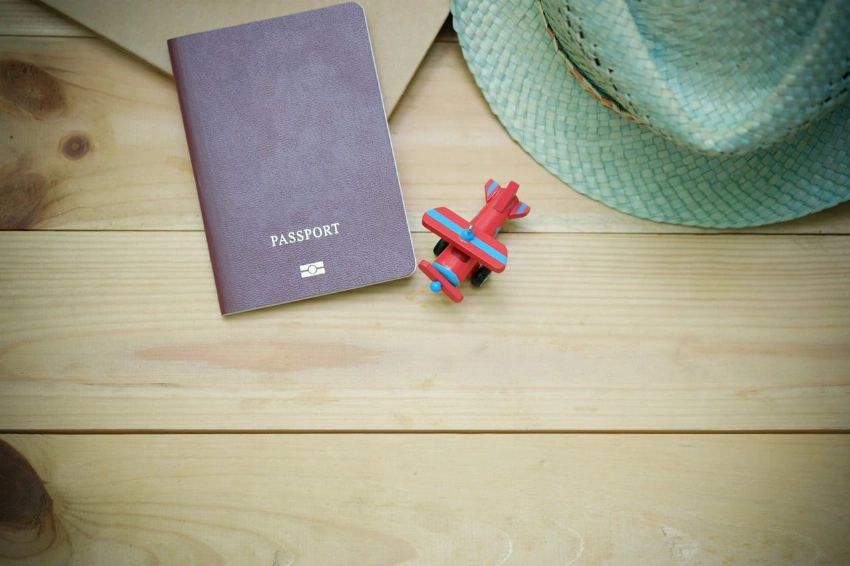
By knowing the reasons why the B1/B2 visa applications are rejected, you can prepare better, and you can also make error-free applications.
The usual reasons that a B1/B2 visa is denied:
-
Weak attachment to the country you belong to
-
or (such as secure occupation, family, or home).
-
An ambiguous travel arrangement or purpose causes the consular officer to be suspicious of your purpose.
-
Lack of enough evidence to show that your finances can sustain you and your travel to the US.
-
Any prior overstays or immigration violations on a US visa or visas of other countries.
-
Providing partially or erroneously documented information in your application or interview.
Becoming familiar with these reasons will play an essential role in learning the difference between B1 and B2 visa requirements and eligibility, and you will likely refine a powerful, honest application that will help keep your chances of success high.
Conclusion: Choosing the Right Visa for Your US Visit
The difference between B1 and B2 visa is required for US travel. The B1 visa will suit you if your visit is business-oriented and has no other purpose. The B2 visa is correct when you intend to travel for tourism, to stay with your family, or to undergo medical treatment. B2/B1 combination visa is the best form of visa when one wants to combine business and pleasure in a single visit. When filling out the documents, ensure they reflect your visa intention and study up on your interview. It is best to understand the difference between B1 and B2 US visa so that planning your trip goes well and you do not make unreasonable mistakes when visiting the US.
Contact TerraTern for more information on the difference between B1 and B2 visa.
